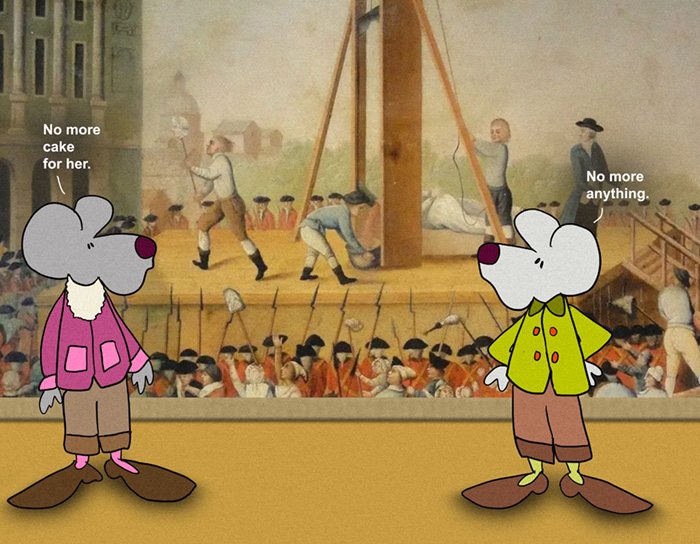I’ve been to Europe a few times and in a few different ways. I loved every minute of those trips, soaking in all I could in the way of culture and history. Everywhere I turned, there was something new to learn, to see, to eat!
Yet, as with any place or thing, facts can get skewed. It only takes one slovenly bastard to get the ball rolling. He turns to the guy next to him at the bar and says, “Hey. Did you happy to hear that Sally went out with Sam?” And before you know it, the big snowball has rolled down the hill. Three days later, there is a robot-drone force that looks like humans called SallySams, and they are trying to take over the country, abort all babies, and seize all guns.
That’s how the falsities begin. And that’s how they take on a life of their own. I mention this because there are an awful lot of known “facts” about the world. Unfortunately, in so many cases, these stories are actually false. I recently happened upon a few in Europe’s arsenal of tales.
Take Catherine the Great, for instance. Specifically, her death. If you go anywhere in Europe or Russia, you are likely to hear that Catherine was crushed to death while trying to have sex with a horse. As if that wasn’t bad enough, there’s always someone who brings up the other false story about her death — that she died while dropping a doogie while sitting on the toilet. Neither is true.
Catherine, who truly was great in so many ways, had a son named Paul. He was going to be the next successor to the throne. But she was concerned that Paul was not emotionally fit to rule. So. Being the good mother, she planned to remove him from the succession and name Paul’s son Alexander as heir. But before she could make the change, she died. Not by horse or toilet. She suffered a stroke on Nov. 17, 1796, and that was that. I guess Paul was meant to rule, for he ascended to the throne.
Let’s consider another famous woman of Europe. We all know her, Marie Antoinette. We also might remember her by the something snooty she supposedly said. “Let Them Eat Cake.”
This all came right before the French Revolution. The French monarchy was seen as arrogant, stupid, and uncaring. And the story goes that when Queen Marie Antoinette, on hearing that people were starving, and had no food, said, “Let them eat cake.”
But this simply isn’t true. When she heard that the citizens of France had no bread to eat, she never uttered the words “Qu’ils mangent de la brioche.” (Let them eat cake.) No. In reality, it was the critics of the Queen who made this false accusation in order to make her look insensitive and undermine her position.
Those exact words had actually been used a few decades earlier to also attack a different ruler. The critics/enemies of Marie just spread the big rumor to tear her down. And it worked. It worked so well that she lost her head. Whacked right off, for public viewing. Another example of how dangerous lies from powerful places can be.
And those are just a few of the historical “truths” that most people get wrong. We continue to see a myriad of falsities in our modern happenings.
We know what we are taught.
So.
Be careful what you teach. Be careful what you learn.
==========
“A lie can run round the world before the truth has got its boots on.”
― Terry Pratchett, The Truth
==========
“Don’t forget this, too: Rumors aren’t interested in the unsensational story; rumors don’t care what’s true.”
― John Irving, In One Person
==========
“If something bad smells in the basement, it will eventually make its way to the attic.”
― Anthony Liccione
=========
Whoops. That history is not right.
